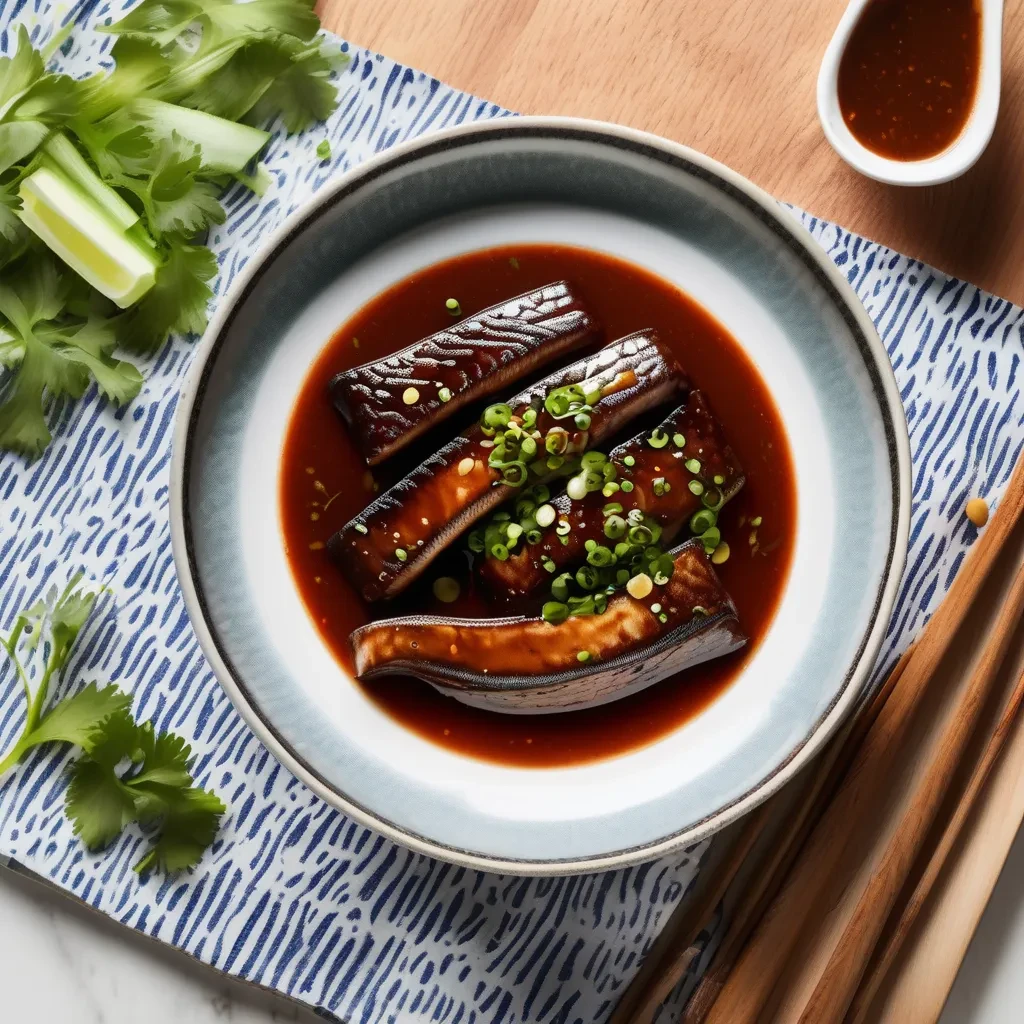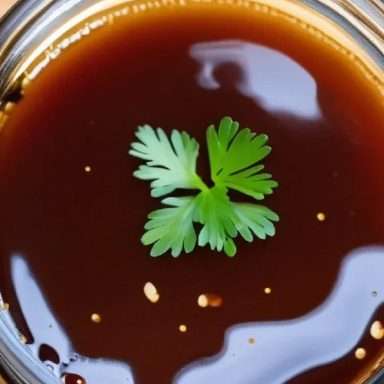Eel sauce, also known as nitsume or unagi no tare, is a rich, glossy sauce that hails from Japan. Traditionally used to glaze grilled eel, this sauce has become a beloved condiment in various Asian cuisines. Its origins trace back to the preparation of unagi, where the sweet-savory flavor profile beautifully complements the fish’s natural richness. Made primarily from soy sauce, mirin, and sugar, eel sauce captures the essence of umami and sweetness, making it a versatile addition to many dishes. Over time, it has evolved beyond its traditional use, finding its way into sushi rolls, grilled meats, and even vegetable dishes, becoming a staple in both Japanese and fusion cooking.
Why I Love Eel Sauce Recipe
I love making eel sauce for its incredible balance of flavors—sweetness from the sugar, depth from the soy sauce, and a slight acidity from the mirin. This balance transforms even the simplest of dishes into something extraordinary. When I drizzle it over grilled vegetables or sushi, it adds a layer of complexity that elevates the entire meal. The sauce’s glossy finish also makes every dish visually appealing, turning a simple dinner into a feast for the eyes. There’s something immensely satisfying about watching the sauce thicken and coat my ingredients, creating a delicious glaze that beckons to be savored.
What makes this recipe even more special is the nostalgia it evokes. Preparing eel sauce reminds me of joyful gatherings with family and friends around the dining table. The warm aroma that fills my kitchen as the sauce simmers brings back memories of laughter and connection. It has become a staple in my home, a comforting reminder of those shared moments. Each time I make it, I think of all the meals enjoyed together, turning ordinary dinners into memorable experiences. Eel sauce not only enhances the flavors of the food but also enriches the moments shared with loved ones, making it a cherished part of my culinary journey.

Serving Suggestions For Eel Sauce Recipe
Eel sauce’s versatility allows it to shine in many dishes, enhancing flavors and adding a delightful touch. Here are four serving suggestions to make the most of this delicious sauce:
- Grilled Eel: The classic pairing, drizzling eel sauce over perfectly grilled eel enhances its rich flavor and adds a beautiful glaze that makes the dish truly irresistible.
- Sushi Rolls: Use eel sauce as a finishing touch on sushi rolls. A light drizzle over your favorite rolls adds sweetness and umami, elevating the overall taste experience.
- Stir-Fried Vegetables: Toss steamed or stir-fried vegetables in eel sauce for a quick and delicious side dish. The sauce not only adds flavor but also a glossy sheen that makes the veggies visually appealing.
- Rice Bowls: Drizzle eel sauce over rice bowls topped with your choice of protein, whether it’s grilled chicken, tofu, or shrimp. The sauce harmonizes all the flavors, creating a satisfying meal that everyone will love.
Incorporating eel sauce into these dishes can turn a simple meal into something exceptional!
Variations For Eel Sauce Recipe
While traditional eel sauce is fantastic, there are many exciting variations you can try to suit different tastes and dishes. Here are four delicious twists on the classic recipe:
- Spicy Eel-Sauce: For those who enjoy a bit of heat, add a touch of sriracha or chili oil to your eel sauce. This spicy variation enhances the flavor with an exciting kick that pairs wonderfully with grilled meats and sushi.
- Citrus Eel-Sauce: Infuse your eel sauce with a splash of citrus, like yuzu or lime juice. This brightens the flavors and adds a refreshing twist that complements seafood beautifully.
- Smoky Eel-Sauce: Introduce a smoky element by mixing in a bit of smoked paprika or liquid smoke. This variation provides depth and complexity, making it perfect for grilled dishes.
- Miso Eel-Sauce: Blend in a tablespoon of miso paste for an added layer of umami. This variation enriches the sauce, making it perfect for drizzling over roasted vegetables or stir-fries.
These variations allow you to customize your eel-sauce, making it even more versatile and fun to use in your cooking!

Storage and Shelf Life For Eel Sauce Recipe
Proper storage of eel sauce ensures you can enjoy its rich flavors for weeks to come. Here are some tips for storing your homemade eel sauce:
- Refrigeration: Once prepared, let the eel-sauce cool completely before transferring it to an airtight container. Store it in the refrigerator, where it will keep for up to two weeks. Always check for any changes in color or smell before using.
- Freezing: For longer storage, consider freezing the sauce. Pour the cooled eel-sauce into ice cube trays and freeze until solid. Once frozen, transfer the cubes to a resealable freezer bag. This method allows you to use portions as needed, and the sauce can last for up to three months in the freezer.
- Thawing: When you’re ready to use frozen eel-sauce, simply thaw the desired number of cubes in the refrigerator or microwave. Give it a gentle stir before serving to restore its consistency.
- Avoid Contamination: To extend the shelf life, avoid introducing contaminants into the sauce. Always use clean utensils when scooping out sauce from the container.
By following these storage tips, you can enjoy the deliciousness of eel-sauce for an extended period!
Health Benefits of Eel Sauce Recipe
While eel-sauce is often enjoyed for its delightful taste, it also offers some health benefits when used in moderation. Here are a few reasons to appreciate this flavorful condiment:
- Source of Antioxidants: The primary ingredients in eel-sauce, especially soy sauce, contain antioxidants that can help combat oxidative stress in the body. These compounds contribute to overall health and wellness.
- Umami Flavor Enhancer: The umami flavor in eel sauce can enhance the satisfaction of meals, which may lead to smaller portion sizes. This can help manage overall caloric intake without sacrificing flavor.
- Low Calorie Condiment: Compared to many other sauces and dressings, eel-sauce is relatively low in calories, making it a flavorful choice without significantly impacting your dietary goals.
- Versatility: Eel-sauce can be incorporated into various dishes, allowing you to boost the flavor of healthier options like steamed vegetables and lean proteins, making it easier to maintain a balanced diet.
When enjoyed in moderation, eel-sauce can add a delicious flair to your meals while offering some health benefits.


Eel Sauce Recipe
Equipment
- Small saucepan
- Measuring cups and spoons
- Whisk or spoon for stirring
- Airtight container for storage
Ingredients
- ½ cup Soy sauce
- ¼ cup Mirin
- 2 tablespoons Sugar
Instructions
- Combine Ingredients: In a small saucepan, mix together the soy sauce, mirin, and sugar.
- Heat the Mixture: Place the saucepan over medium heat and bring the mixture to a gentle simmer, stirring to dissolve the sugar completely.
- hicken the Sauce: Continue to simmer for about 10-15 minutes, or until the sauce has thickened slightly and coats the back of a spoon. Keep an eye on it to prevent burning.
- Cool and Store: Remove the saucepan from heat and let the sauce cool. Once cooled, transfer the eel sauce to an airtight container for storage.
Related Video
Related Notes
- Use Quality Ingredients: The flavor of your eel sauce heavily depends on the quality of your soy sauce and mirin. Opt for high-quality, authentic brands for the best taste.
- Adjust Sweetness: Feel free to adjust the amount of sugar based on your preference. If you like it sweeter, add a little more; if you prefer it less sweet, reduce the sugar.
- Watch the Cooking Time: Be careful not to overcook the sauce, as it can become too thick and caramelize. It should have a syrupy consistency that can coat the back of a spoon.

